ponLink
Paralle
l
Parallel Lines
Always the same distance apart and never touching.
The red line is parallel to the blue line in both these cases:
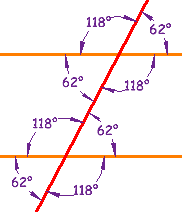
 |  | |
Example 1
|
Example 2
|
Parallel lines also point in the same direction.
Parallel lines have so much in common. It's a shame they will never meet!
Pairs of Angles
When parallel lines get crossed by another line (which is called aTransversal
These angles can be made into pairs of angles which have special names.
Click on each name to see it highlighted:
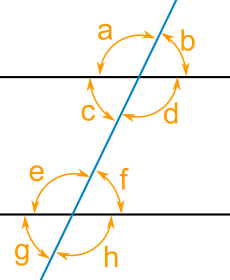
Choose One:
© 2015 MathsIsFun.com v 0.81
Testing for Parallel Lines
Some of those special pairs of angles can be used to test if lines really are parallel:
| 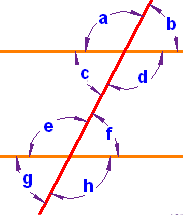 | ||||||||||||||||
Examples
| These lines are parallel, because a pair | 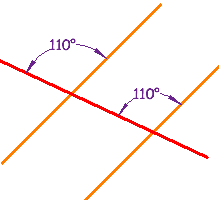 |
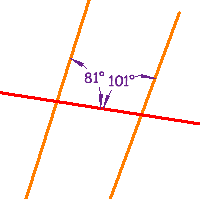 | These lines are not parallel, because a pair |
| These lines are parallel, because a pair of Alternate Interior Angles | 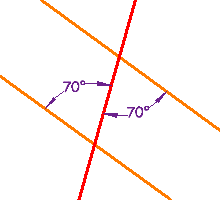 |














